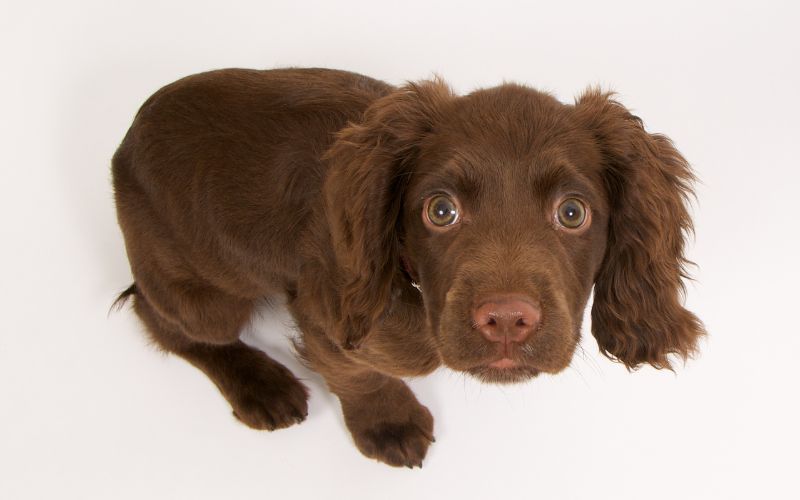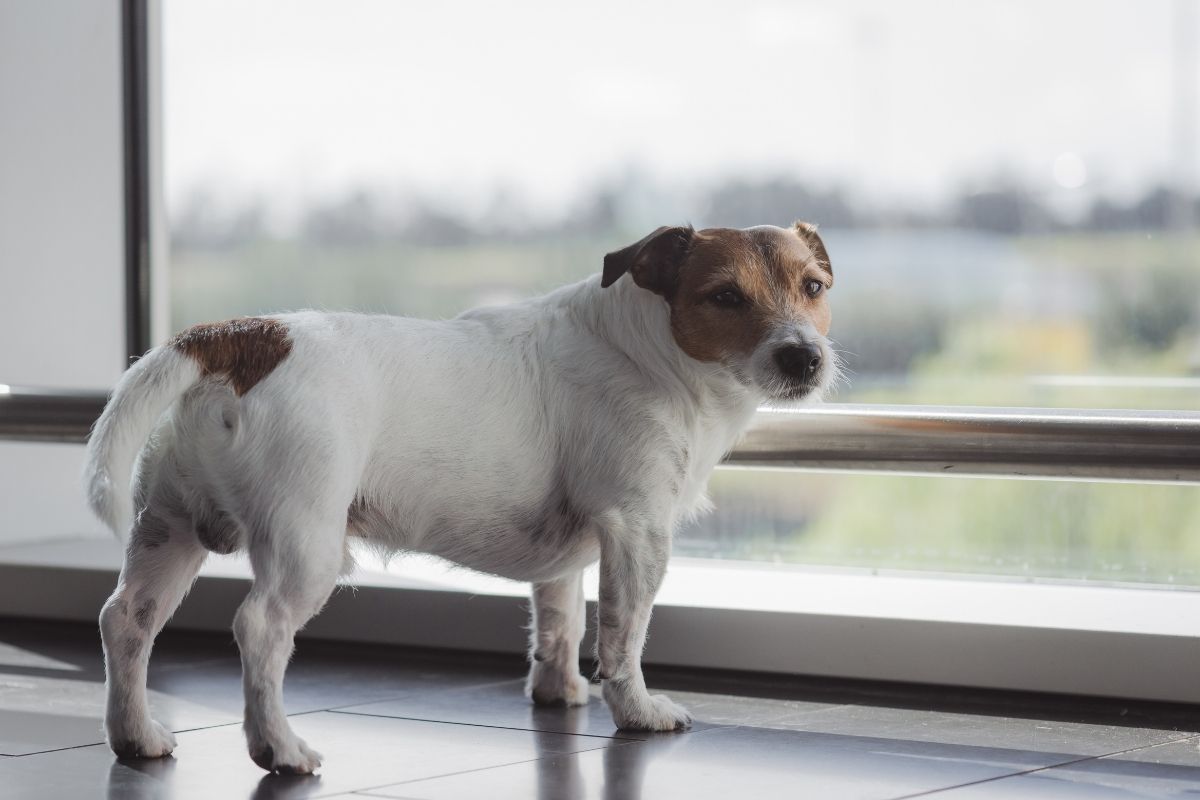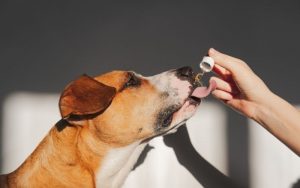Dogs want to be with their families, and they enjoy being around the rest of the pets in the house.
The majority of dogs do not like being left alone. This is true even of dogs that seemingly enjoy their own company.
People who are away from home all day can find it difficult to provide the social stimulation that dogs need to be happy.
Dogs, like people, become lonely and bored when they spend too much time on their own. When you work full-time, your pet will appreciate having a canine buddy.
If you can’t find a way to work from home, or if you need to leave the dog at home alone during the day for other reasons (e.g., taking care of ill or elderly parents), there are steps you can take to make those hours less stressful for your pet.
Many dogs struggle with separation anxiety, which can lead to howling, barking, and even destructive behavior as the dog expresses his sadness and frustrations at being left alone. Our 10 Tips for Dealing with Dog Separation Anxiety might help you and your pet.
Early warning signs of separation anxiety in dogs
The typical indicators of separation anxiety in dogs, such as howling and barking, and destructive behaviour, are well known.
However, there are additional indications to watch for that might suggest that your dog is nervous when you leave him alone.
Destructive behaviour – this is frequently aimed at the place where you departed, with doors, wallpaper near the door, and even furniture being attacked and destroyed as the dog demonstrates his anxiety and stress about being on his own.
The most common symptoms of anxiety in dogs are barking and howling, which is when the dog screams for his pack and family to return and calls out in an attempt to get their attention.
Even housetrained dogs may be unable to relieve themselves when their anxiety gets out of control.
This is not the same as being lazy. If you haven’t bothered to take your dog for a walk before leaving him, it’s no surprise that he has relieved himself in the house. A bursting dog will go if necessary.
The dog may be pacing back and forth if it is worried or unable to calm down.
Excessive drooling, panting, and drooling are all warning signs that a dog may be afraid or worried about something.
When dogs are anxious, they may cut themselves in order to alleviate the discomfort. Front legs and paws are sometimes affected, which are within easy reach of the dog’s teeth.
Vomiting – the dog becomes so upset that he usually retches up with anxiety.

What causes separation anxiety in dogs?
Your dog is at home with the family or some members of the family in normal situations.
He has company, and he feels safe and secure.
He becomes anxious and exposed as soon as he is left alone.
His family – the pack – has all departed, leaving him.
Your dog has no concept of work, going to the shop, school, and other commitments and activities that humans undertake.
When you leave him alone – you’ve abandoned him and may not return.
As a result, he becomes concerned and anxious, attempting to escape if they can’t do so. Every time you depart, it’s over for them.
Some dogs are more likely to suffer from separation anxiety than others.
These pets have not been exposed to being left behind in a safe environment, so they are unable to learn that nothing terrible happens when the family is gone.
Dogs with no previous experience of being alone can develop this behaviour if their owner has to work long hours, travel frequently, or spend time in hospital.
Dogs suffering from separation anxiety can be very vocal and persistent, with some dogs crying for more than six hours a day.
Some affected pets bark and bark the entire time you’re gone, and howl as soon as any member of the family departs.
This condition is frustrating for both dog and owner and can lead to destructive behaviour.
Causes of separation anxiety in dogs
There are various reasons why some dogs may suffer from this problem more than others.
However, the common underlying factor is that they have not been exposed to being left at home on their own.
This causes these pets to be frightened and anxious whenever they are separated from their family – the pack.
There are some dogs that suffer from separation anxiety because of an emotional disorder, such as depression and feelings of panic and stress.
Other pets may be affected if they were weaned too early or moved away from their mothers and litter mates too early. The social nature of dogs contributes to this type of anxiety, and it can begin in the dog’s early months.
Boredom and loneliness can also cause a dog to develop separation anxiety. Dogs that suffer from this problem need regular exercise and stimulation, or they become frustrated and distressed when you leave them at home alone.
Pets that have a history of abuse or past difficulties may also be more likely to suffer from this problem.
The ThunderShirt is a great choice for an anxious dog
[amazon box=”B00JPUU1I2″ template=”horizontal”]
How to treat a dog suffering from separation anxiety?
As a result of the pet’s previous experiences or emotional disposition, these special dogs have not learned how to cope with being alone.
Their keen sense of smell may also lead them to think that their family is nearby – even when they are 50 miles away.
This can be hard to handle for some owners.
If your dog has separation anxiety, the first thing you should do is to take him to a veterinarian.
Many times, this problem can be due to physical ailments that have not been diagnosed.
Your vet may prescribe medication or other treatment if physical problems are involved.
You can do a lot to help your dog with separation anxiety, and many of the steps are simple and straightforward to put in place.
The first things you should think about are your dog’s safety.
Anything that might harm or injure your dog should be removed.
Make certain that any chemical pesticides or cleaners are out of the space, as well as electrical leads and cords. At the very least, unplug the supply.
You must dog proof the area in the same way that you would toddler-proof your home when young children are around — adopt a similar approach with your dog.
Make sure that your dog has a pleasant, comfortable bed and lots of clean water. A supply of toys, as well as maybe a handful of goodies to keep him entertained, would also be beneficial.
How to help your dog deal with separation anxiety in 10 easy steps
There are several methods for dealing with separation anxiety in dogs, but the the most popular and simple ones are:
1. A dog cage or an indoor kennel – a kennel indoors may provide a sense of security to your dog because it is almost like a cave and the walls and roof offer protection and enclosure.
Cover the top with a cloth and make sure that the interior is cozy as well as a safe place for your dog to relax.
Allow him access to this area while you are at home, and encourage your pet to sleep in it by leaving the door open.
2. Calming herbal remedy – using an herbal remedy is a fantastic way to help your dog deal with separation anxiety without resorting to medication.
These special calming formulas replicate the effect of serotonin on the brain, and change their biochemical behaviour.
3. Treat dispenser toys – a special treat dispensing toy can be a tremendous help in resolving this problem in dogs because it fulfils the dog’s need to work for its food and provides a welcome distraction from any anxieties or stress.
You can use this method with both puppies and adult dogs, including older pets who have been dealing with separation anxiety for many years.
4. A new collar and lead – a new collar and lead can help you to start the training process, and they may also help your dog build up his confidence around you too.
New things tend to be more exciting than familiar ones, so this is an inexpensive way of encouraging your pet to view you as his absolute best friend.
5. Positive reinforcement training – using positive reinforcement techniques will let your dog understand that it is good for you to leave him at home alone, and help him to build up his confidence .
Before leaving your dog at home alone, use a special phrase to let your dog know that you are going. After leaving the house, come back after a short time and reward him with lots of praise, cuddles and treats.
This will help your dog to understand that when he is on his own, it’s nothing for him to worry about because he has already earned something wonderful during the absence.
6. Classical conditioning – this is a simple method that can also help your dog build up his confidence, enabling him to deal with separation anxiety much more quickly.
To begin classical conditioning, you should leave the radio on when you are at home and leave the room; then return after five minutes.
Use this time to give your pet some treats. Every time you repeat this process, gradually increase the number of minutes that you are out of the room.
7. Exercise – By taking your dog out for a good walk you will help him to become tired which will relax him and help him sleep while you are away. If you include some training exercises or play some enjoyable games that challenge him mentally, then he will return home ready to rest and sleep, reducing his chances of becoming anxious when you have to go out.
8. Consider a dog walking service or doggy day care. These can be great options for a dog – they will have access to human company and other dogs, which will help them with their doggy social skills. You’ll also benefit, as you’ll be assured that your pet is safe and is enjoying himself.
9. Medication – In severe cases, your vet may advise you to try medication as well as the behavioural methods outlined above.
Always check with a specialist vet to make sure that your method of choice is suitable for your pet’s needs.
10. Using a Thundershirt – these special shirts can be enormously helpful in calming your dog and helping him to deal with the anxiety he feels when you are not at home.
They can help both puppies and adult dogs, and they do not cause any kind of side effects.
Final Words
Anxiety is a common issue among dogs, and it occurs more often than people think.
You can assist your dog deal with his separation anxiety by considering a few things.
-Medication (in severe cases)
-Exercise and training exercises
-Keep calm and don’t worry; your pet will sense your emotions.
-Leave the radio on when you go out of the house and come back after a short time to reward him with cuddles, treats and praise.
As with all things, you should consult with your veterinarian to obtain the most out of their expertise, since they may also be able to assist your canine friend.
Read Next
- Can Corona Virus Infect Dogs?
- Best essential oils for working dogs?
- Do spaniels have webbed feet? Yes, they do but why?
- Top paw care tips for spaniels – What you need to know
- How to prevent heatstroke in spaniels (plus 5 other summer hazards)
- What can you give a dog to stop diarrhea? What you should know










